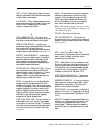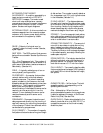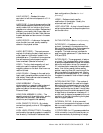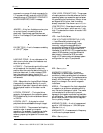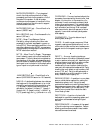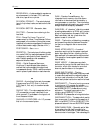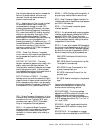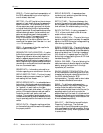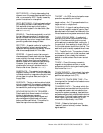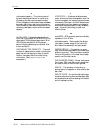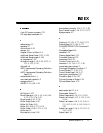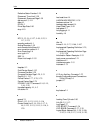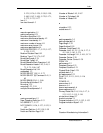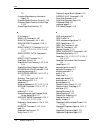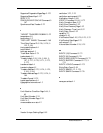
Glossary
Maxtor Atlas 10K III 18/36/73 GB Ultra160 SCSI G-11
SOFT ERROR – A faulty data reading that
does not recur if the same data is reread from the
disk, or corrected by ECC. Usually caused by
power fluctuations or noise spikes.
SOFT-SECTORED – Old time-based method
of indicating the start of each sector on a disk.
Soft-sectored drives require that location
instructions be located in the data fields. (See
also
hard-sectored.)
SPINDLE – The drive’s center shaft, on which
the hard disks are mounted. A synchronized
spindle is a shaft that allows two disks to spin
simultaneously as a mirror image of each other,
permitting redundant storage of data.
SPUTTER – A special method of coating the
disk that results in a hard, smooth surface
capable of storing data at a high density. Maxtor
disk drives use sputtered thin film disks.
STEPPER – A type of motor that moves in
discrete steps with each electrical pulse. Stepper
were originally the most common type of
actuator engine, since they can be geared to
advance a read/write head one track per step.
However, they are not as fast, reliable, or
durable as the voice coil actuators found in
Maxtor disk drives. (See also
voice coil.)
SUBSTRATE – The material underneath the
magnetic coating of a disk. Common substrates
include aluminum or magnesium alloys for hard
drives, glass, for optical disks, and mylar for
floppy disks.
SURFACE – The top or bottom side of a disk,
which is coated with the magnetic material for
recording data. On some drives one surface may
be reserved for positioning information.
SYNCHRONOUS DATA TRANSFER –
Data transfer that allows transfer of multiple
blocks of data between request or
acknowledgment signals, since request and
acknowledgment signals need not be sent
before and after each block. This method is
faster than asynchronous data transfer.
TARGET – An SCSI device that performs an
operation requested by an initiator.
target routine – An I/O process directed to a
target and not to a logical unit.
THIN FILM – A type of coating allowing very
thin layers of magnetic material, used on hard
disks and read/write heads. Hard disks with thin
film surfaces can store greater amounts of data.
THIRD-STROKE SEEK – A method of
evaluating the power requirements of a hard
drive. It involves monitoring drive current
while seeking to a selected track, waiting for 1/
2 a revolution, then seeking to a track that is 1/
3 of the total actuator stroke from the first. The
seek/wait cycle is usually repeated three times.
TPI – Tracks Per Inch. The number of tracks
written within each inch of disk’s surface, used
as a measure of how closely the tracks are
packed on a disk surface. Also known as track
density.
TRACK – One of the many concentric
magnetic circle patterns written on a disk
surface as a guide for storing and reading data.
Also known as
channel.
TRACK DENSITY – How closely the tracks
are packed on a disk surface. The number is
specified as tracks per inch (TPI).
TRACK-TO-TRACK SEEK TIME – The
time required for the read/write heads to move
to an adjacent track.
TRANSFER RATE – The rate at which the
disk sends and receives data from the controller.
The sustained transfer rate includes the time
required for system processing, head switches
and seeks, and accurately reflects the drive’s true
performance. The burst mode transfer rate is a
much higher figure that refers only to the
movement of data directly into RAM.
TRUE – Refers to the logical-one (or
“asserted”) state of a binary number. See also,
signal assertion.



